-
 Bitcoin
Bitcoin $116400
-0.36% -
 Ethereum
Ethereum $4033
3.40% -
 XRP
XRP $3.302
-1.26% -
 Tether USDt
Tether USDt $1.000
-0.02% -
 BNB
BNB $796.1
1.67% -
 Solana
Solana $177.8
1.89% -
 USDC
USDC $0.9999
0.00% -
 Dogecoin
Dogecoin $0.2314
4.09% -
 TRON
TRON $0.3381
0.14% -
 Cardano
Cardano $0.7989
1.22% -
 Stellar
Stellar $0.4496
-1.84% -
 Chainlink
Chainlink $20.42
9.42% -
 Hyperliquid
Hyperliquid $41.17
0.88% -
 Sui
Sui $3.914
3.77% -
 Bitcoin Cash
Bitcoin Cash $584.7
1.52% -
 Hedera
Hedera $0.2632
-0.54% -
 Avalanche
Avalanche $24.09
3.40% -
 Ethena USDe
Ethena USDe $1.001
-0.02% -
 Litecoin
Litecoin $123.2
1.33% -
 Toncoin
Toncoin $3.318
-0.04% -
 UNUS SED LEO
UNUS SED LEO $8.984
-0.05% -
 Shiba Inu
Shiba Inu $0.00001323
2.85% -
 Uniswap
Uniswap $10.90
4.41% -
 Polkadot
Polkadot $3.999
3.34% -
 Dai
Dai $1.000
0.01% -
 Cronos
Cronos $0.1630
9.64% -
 Bitget Token
Bitget Token $4.484
0.82% -
 Monero
Monero $272.4
2.44% -
 Pepe
Pepe $0.00001173
6.03% -
 Aave
Aave $290.8
2.88%
After breaking through the box, it steps back: Is it an opportunity to add positions or a false breakthrough?
After a crypto breaks out of a box and steps back, it may be a false breakthrough or a chance to add positions; analyze volume, price action, and fundamentals to decide.
Jun 02, 2025 at 01:42 pm
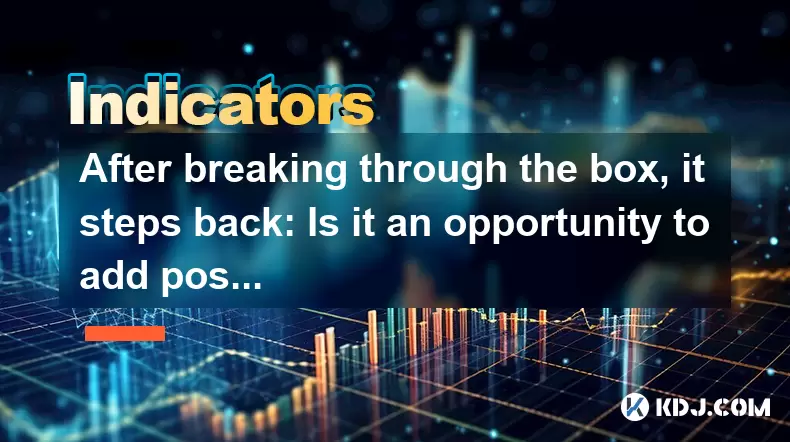
After breaking through the box, it steps back: Is it an opportunity to add positions or a false breakthrough?
In the dynamic world of cryptocurrencies, understanding market movements and trends is crucial for making informed investment decisions. One of the common patterns traders look for is a "breakthrough" from a "box" or a consolidation range. When a cryptocurrency price breaks out of such a range and then steps back, it often leaves investors pondering whether this is an opportunity to add positions or a sign of a false breakthrough. This article delves into the intricacies of such scenarios, helping you discern the best course of action.
Understanding Box Patterns and Breakthroughs
A box pattern in the cryptocurrency market refers to a trading range where the price of a cryptocurrency moves between two horizontal levels over a period. These levels are known as support and resistance. A breakthrough occurs when the price decisively moves beyond these levels, signaling a potential shift in market sentiment.
When a cryptocurrency breaks out of a box and then steps back, it could mean several things. It might be a false breakthrough, where the price momentarily exceeds the resistance or support level but fails to sustain the move. Alternatively, it could be a healthy pullback, where the price retraces slightly before continuing its trend, offering a potential opportunity for investors to add positions.
Identifying a False Breakthrough
To determine if the step back after a breakthrough is a false signal, traders need to look at several technical indicators and market conditions. Here are some key factors to consider:
Volume Analysis: A true breakthrough is often accompanied by a significant increase in trading volume. If the volume does not increase or decreases during the breakthrough, it could be a sign of a false move.
Price Action: After the initial breakthrough, if the price quickly reverses and closes back within the box, it suggests a false breakthrough. Look for candlestick patterns like doji or shooting stars, which indicate indecision and potential reversal.
Support and Resistance Retest: A false breakthrough often leads to the price retesting the previous support or resistance levels. If the price breaks out but then fails to hold above the resistance or below the support, it might be a false signal.
Recognizing an Opportunity to Add Positions
If the step back after a breakthrough is not a false signal, it could present a golden opportunity to add positions. Here's how to identify such scenarios:
Consolidation After Breakthrough: If the price consolidates around the new level after a breakthrough, it suggests that the market is accepting the new price range. This consolidation can be a good entry point for adding positions.
Trend Confirmation: Look for other technical indicators like moving averages or the Relative Strength Index (RSI) to confirm the trend. If these indicators show continued strength in the direction of the breakthrough, it's likely a good time to add positions.
Fundamental Analysis: Alongside technical indicators, consider the fundamental factors driving the cryptocurrency. Positive news or developments can reinforce the validity of the breakthrough and support the decision to add positions.
Risk Management in Breakthrough Scenarios
Whether you decide to add positions or wait out a potential false breakthrough, risk management is paramount. Here are some strategies to manage your risks effectively:
Set Stop-Loss Orders: Always set stop-loss orders to limit potential losses. If you add positions after a breakthrough, place your stop-loss just below the new support level (if you're long) or above the new resistance level (if you're short).
Position Sizing: Only invest what you can afford to lose. Adjust your position size based on the volatility and your risk tolerance.
Diversification: Don't put all your eggs in one basket. Diversify your portfolio across different cryptocurrencies to mitigate the risk associated with any single asset.
Real-World Examples of Breakthroughs and Step Backs
To illustrate these concepts, let's look at a few real-world examples from the cryptocurrency market:
Bitcoin (BTC) Breakthrough in 2021: In early 2021, Bitcoin experienced a significant breakthrough above the $20,000 resistance level. After the initial surge, the price stepped back to around $18,000 before resuming its upward trend. Traders who recognized this as a healthy pullback and added positions at $18,000 could have benefited from the subsequent rally.
Ethereum (ETH) False Breakthrough in 2020: In late 2020, Ethereum briefly broke above the $400 resistance level but quickly stepped back and closed within the previous range. This turned out to be a false breakthrough, and the price continued to consolidate around $350 before eventually breaking out again in early 2021.
Practical Steps to Analyze Breakthroughs and Step Backs
When you encounter a breakthrough followed by a step back, follow these practical steps to make an informed decision:
Analyze the Breakthrough: Review the price chart to confirm the breakthrough. Look for a clear move beyond the resistance or support level, accompanied by increased volume.
Monitor the Step Back: Observe how the price behaves after the step back. Is it consolidating around the new level, or is it quickly reversing back into the box?
Use Technical Indicators: Employ technical indicators like moving averages, RSI, and MACD to gauge the strength of the trend. If these indicators align with the direction of the breakthrough, it might be a good time to add positions.
Consider Fundamental Factors: Stay updated on news and developments related to the cryptocurrency. Positive fundamentals can reinforce the validity of the breakthrough.
Implement Risk Management: Before adding positions, set your stop-loss orders and determine your position size based on your risk tolerance.
Stay Patient and Observant: Don't rush into decisions. Sometimes, waiting for further confirmation can help you avoid false breakthroughs and capitalize on genuine opportunities.
Frequently Asked Questions
Q1: How long should I wait after a step back to determine if it's a false breakthrough or a healthy pullback?
A1: There's no definitive time frame, as it depends on the specific cryptocurrency and market conditions. Generally, waiting for a few days to a week can provide more clarity. Look for continued consolidation around the new level or a decisive move back into the box to make your decision.
Q2: Can fundamental analysis alone help in deciding whether to add positions after a breakthrough?
A2: While fundamental analysis is crucial, it should be used in conjunction with technical analysis. Positive fundamentals can support a breakthrough, but technical indicators are essential for confirming the trend and identifying entry points.
Q3: What should I do if I'm unsure whether the step back is a false breakthrough or a healthy pullback?
A3: If you're unsure, it's often better to wait for more confirmation rather than rushing into a decision. Use a combination of technical indicators, volume analysis, and fundamental factors to gain more clarity. If in doubt, consider not adding positions until the trend is clearer.
Q4: Are there any specific cryptocurrencies that are more prone to false breakthroughs?
A4: False breakthroughs can occur in any cryptocurrency, but highly volatile assets like altcoins may experience them more frequently due to their susceptibility to market sentiment and manipulation. Always conduct thorough analysis regardless of the cryptocurrency you're trading.
Disclaimer:info@kdj.com
The information provided is not trading advice. kdj.com does not assume any responsibility for any investments made based on the information provided in this article. Cryptocurrencies are highly volatile and it is highly recommended that you invest with caution after thorough research!
If you believe that the content used on this website infringes your copyright, please contact us immediately (info@kdj.com) and we will delete it promptly.
- SHIB Price, Meme Coin Mania, and the 250x Potential Hunt
- 2025-08-09 16:30:13
- SOL, ETFs, and AI: Crypto's Triple Threat Sensation!
- 2025-08-09 17:10:12
- Tokenized Stock on Solana: SOL Price Reacts to Exodus's Bold Move
- 2025-08-09 17:10:12
- Cardano, Mutuum Finance, Millionaires 2025: A New Wave of Crypto Fortunes?
- 2025-08-09 17:50:12
- Meme Coins on Blockchains in 2025: Hype or the Future?
- 2025-08-09 16:50:11
- World Liberty Financial, Public Listing, and WLFI Tokens: A New York Minute on the Trump-Backed Crypto Venture
- 2025-08-09 16:50:11
Related knowledge

What does it mean when the Triple Moving Average (TRIX) turns downward but the price doesn't fall?
Aug 09,2025 at 12:42pm
Understanding the Triple Moving Average (TRIX) IndicatorThe Triple Moving Average, commonly known as TRIX, is a momentum oscillator designed to filter...

What does it mean when the Williams' oscillator repeatedly hits bottoms but fails to rebound?
Aug 09,2025 at 09:28am
Understanding the Williams %R OscillatorThe Williams %R oscillator, developed by Larry Williams, is a momentum indicator used in technical analysis to...
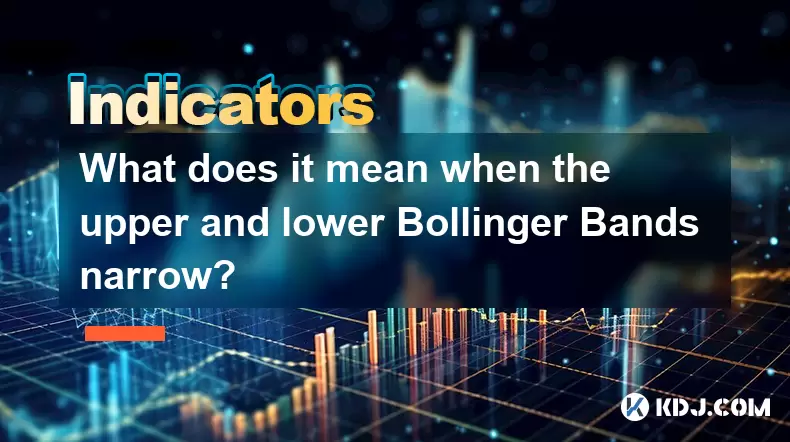
What does it mean when the upper and lower Bollinger Bands narrow?
Aug 09,2025 at 03:00pm
Understanding Bollinger Bands in Cryptocurrency TradingBollinger Bands are a widely used technical analysis tool in the cryptocurrency market, develop...
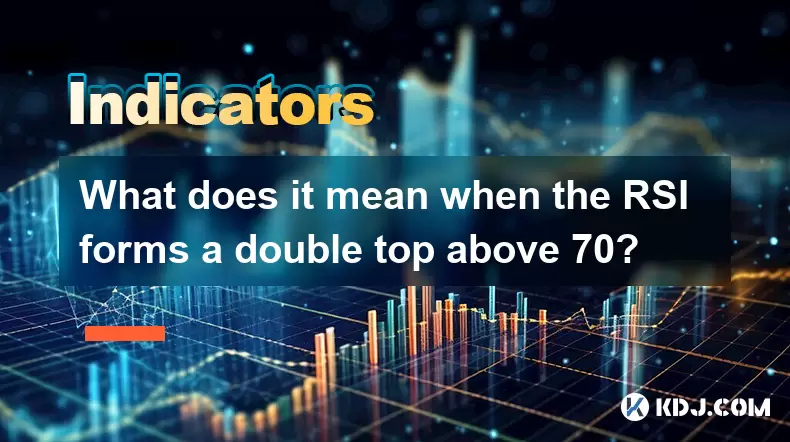
What does it mean when the RSI forms a double top above 70?
Aug 09,2025 at 05:50pm
Understanding the RSI and Overbought ConditionsThe Relative Strength Index (RSI) is a momentum oscillator that measures the speed and change of price ...
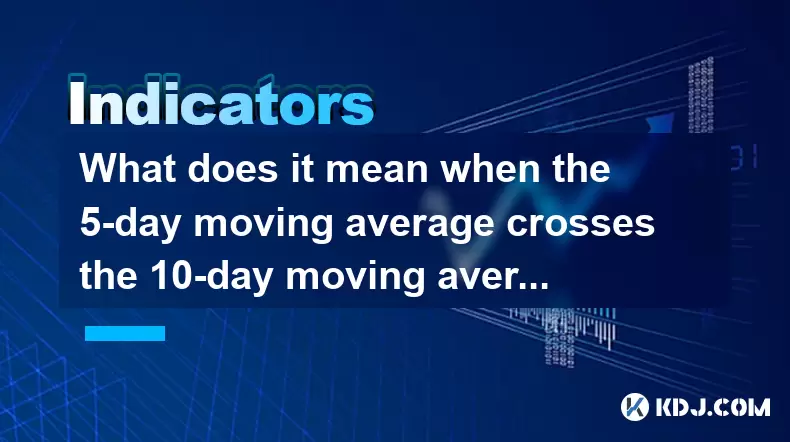
What does it mean when the 5-day moving average crosses the 10-day moving average but the 20-day moving average remains upward?
Aug 09,2025 at 03:35pm
Understanding Moving Averages in Cryptocurrency TradingMoving averages are foundational tools in technical analysis, especially within the cryptocurre...
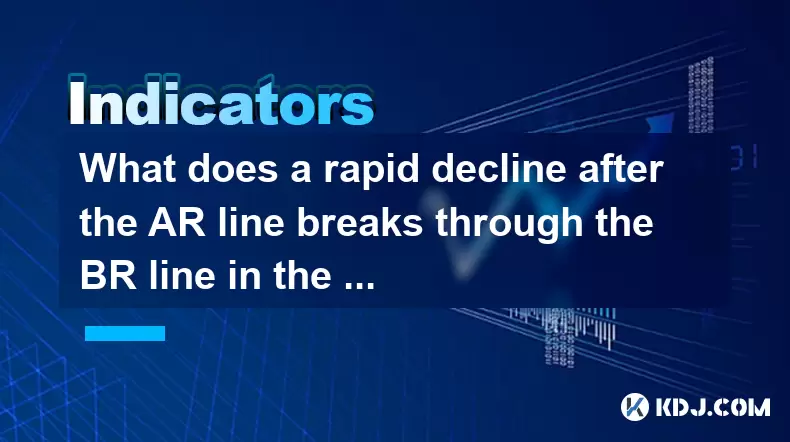
What does a rapid decline after the AR line breaks through the BR line in the ARBR indicator indicate?
Aug 09,2025 at 04:42pm
Understanding the ARBR Indicator ComponentsThe ARBR indicator is a technical analysis tool that combines two oscillators: the AR (Amplitude Ratio) and...

What does it mean when the Triple Moving Average (TRIX) turns downward but the price doesn't fall?
Aug 09,2025 at 12:42pm
Understanding the Triple Moving Average (TRIX) IndicatorThe Triple Moving Average, commonly known as TRIX, is a momentum oscillator designed to filter...

What does it mean when the Williams' oscillator repeatedly hits bottoms but fails to rebound?
Aug 09,2025 at 09:28am
Understanding the Williams %R OscillatorThe Williams %R oscillator, developed by Larry Williams, is a momentum indicator used in technical analysis to...

What does it mean when the upper and lower Bollinger Bands narrow?
Aug 09,2025 at 03:00pm
Understanding Bollinger Bands in Cryptocurrency TradingBollinger Bands are a widely used technical analysis tool in the cryptocurrency market, develop...

What does it mean when the RSI forms a double top above 70?
Aug 09,2025 at 05:50pm
Understanding the RSI and Overbought ConditionsThe Relative Strength Index (RSI) is a momentum oscillator that measures the speed and change of price ...

What does it mean when the 5-day moving average crosses the 10-day moving average but the 20-day moving average remains upward?
Aug 09,2025 at 03:35pm
Understanding Moving Averages in Cryptocurrency TradingMoving averages are foundational tools in technical analysis, especially within the cryptocurre...

What does a rapid decline after the AR line breaks through the BR line in the ARBR indicator indicate?
Aug 09,2025 at 04:42pm
Understanding the ARBR Indicator ComponentsThe ARBR indicator is a technical analysis tool that combines two oscillators: the AR (Amplitude Ratio) and...
See all articles

























































































